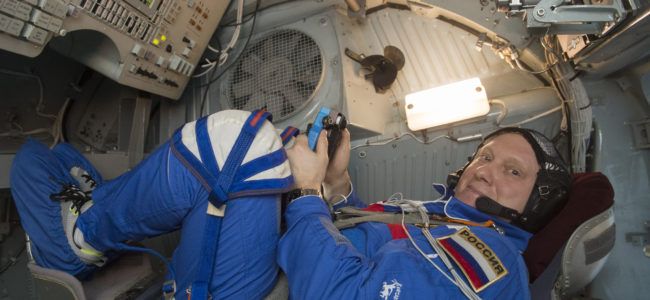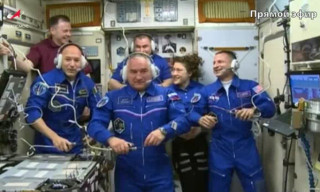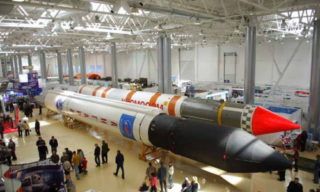The Gagarin Cosmonaut Training Center offers a specialized TS-18 manual control descent simulator based on the TsF-18 centrifuge. The simulator enables cosmonaut training to control the Soyuz-TMA spacecraft under real overload that the crew experiences during the reentry and landing. During the exam, the cosmonauts show an algorithm of actions in case an automatic failure during the descent or a recommendation to switch to a manual control descent.
The crew commander and the flight engineer take the exam in turn. They have only one paper with four tasks for each; there are two modes: static and dynamic. The cosmonaut performs the first two tasks in a stationary centrifuge, and the other two in a rotating centrifuge. The main task in any mode is to land the capsule with minimal overload and as close as possible to the calculated point.
Roscosmos cosmonaut, ISS-65 prime crew commander Oleg Novitsky and Roscosmos cosmonaut, flight engineer Pyotr Dubrov were the first to pass the exam, their backups cosmonauts Anton Shkaplerov and Oleg Artemiev followed the next day. Most of the exam training during the session is to ensure that the cosmonauts can cope with emergencies.
‘Compared to the automatic descent, the manual control one is rather a reserve one, and has not yet been used in reality. But we must prepare cosmonauts for this spacecraft control mode to comprehensively ensure their safety,’ Igor Karyukin, instructor of the ISS-65 backup crew for spacecraft integrated training explained.
As a repeated prime and backup crewmember, commander of the ISS-65 backup crew Anton Shkaplerov took this exam eight times.
‘I have trained a lot, so I don’t think the exam is difficult, you just need to follow the methodology. Two static modes and two dynamic modes. The centrifuge rotation speed and G-load indicators are changing,’ Anton Shkaplerov said. ‘Indeed, the Soviet and Russian cosmonauts have not yet had to go over to manual control descent. But the odds still exist, so training continues. During a ballistic descent, the G-load is several times higher, therefore, if possible, in case automatics fails, it is better to switch to manual control descent.’
Starting on March 19, 2021, the ISS-65 prime and backup crews will begin complex examination trainings, completing the pre-flight session.



















